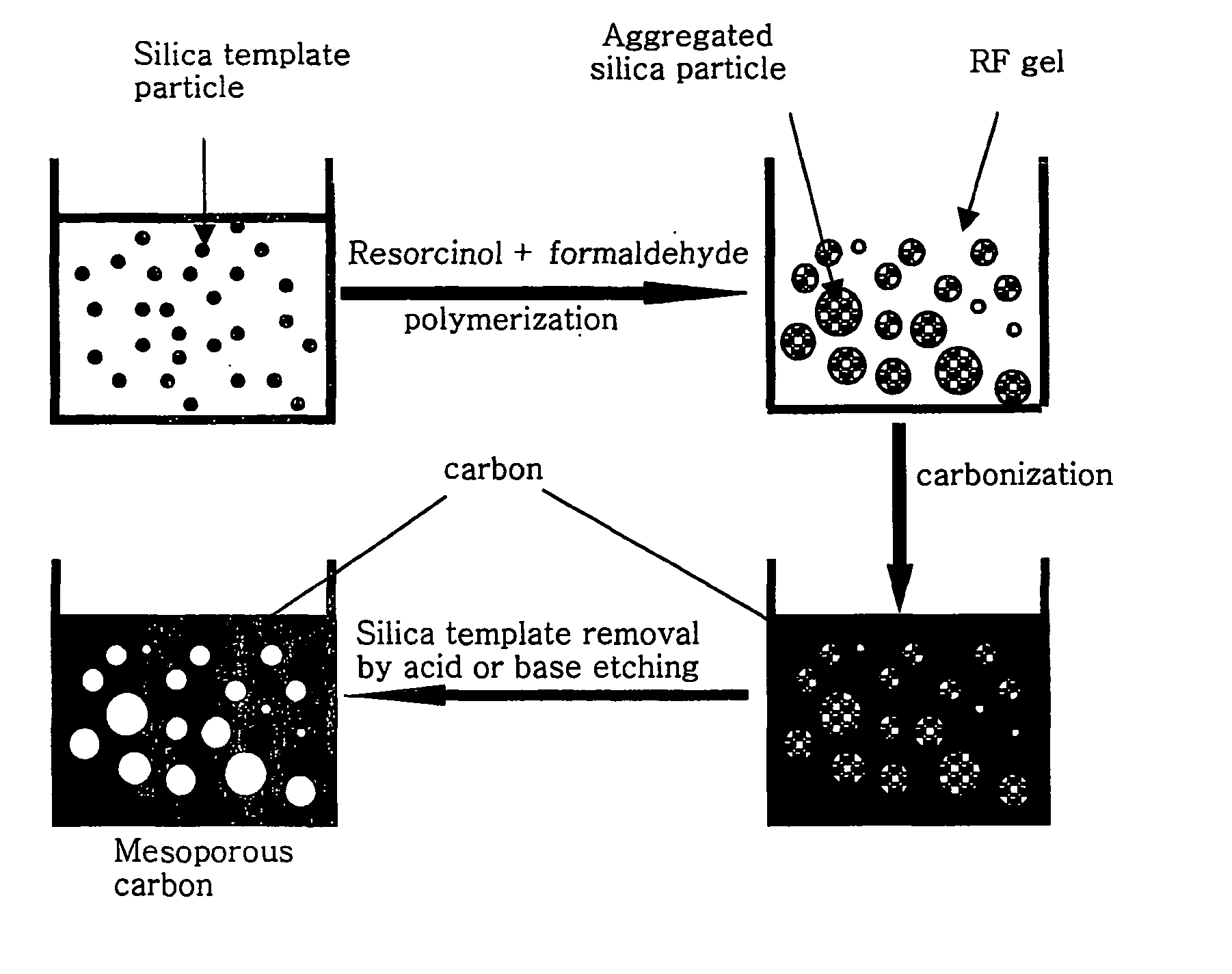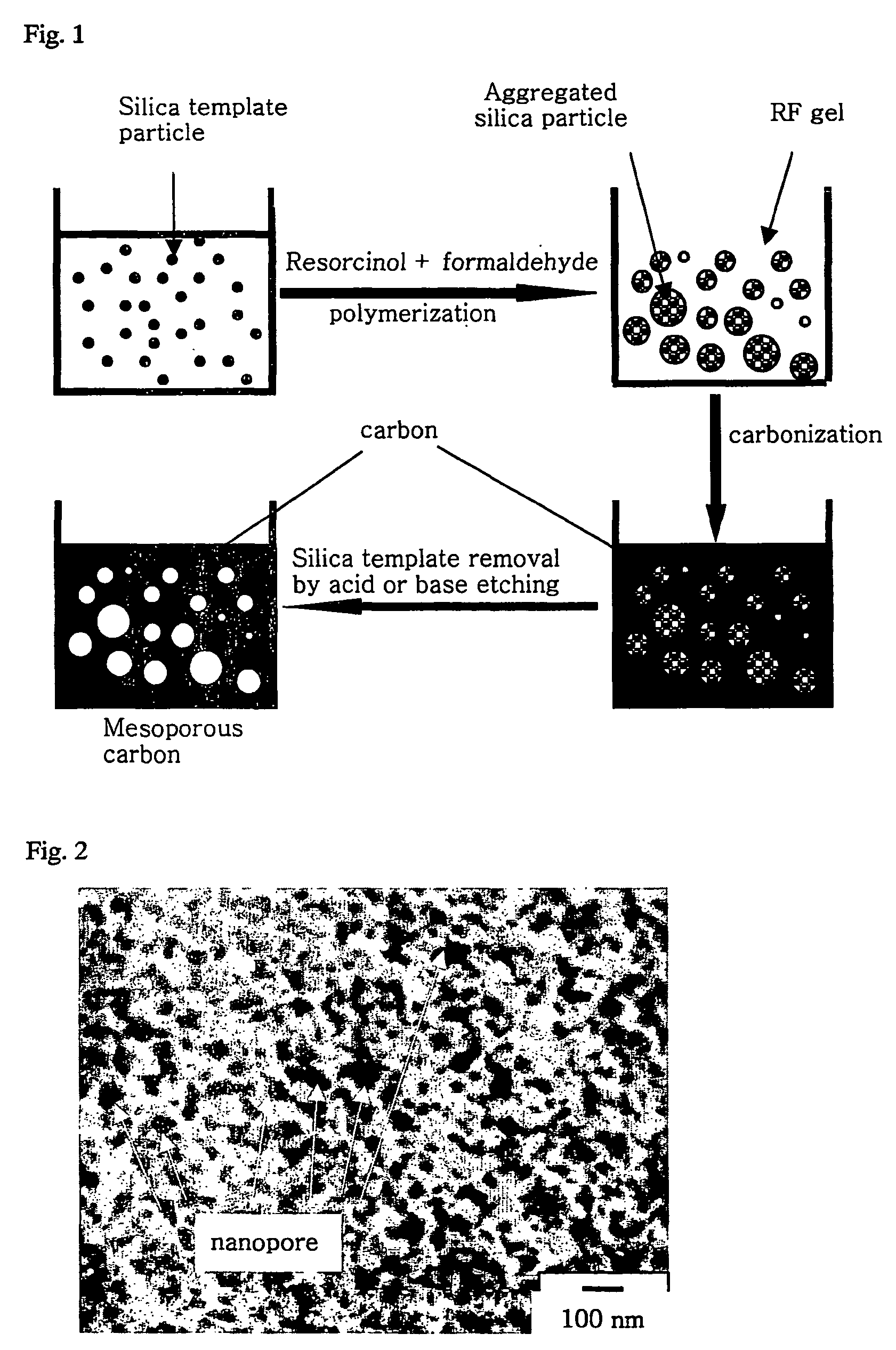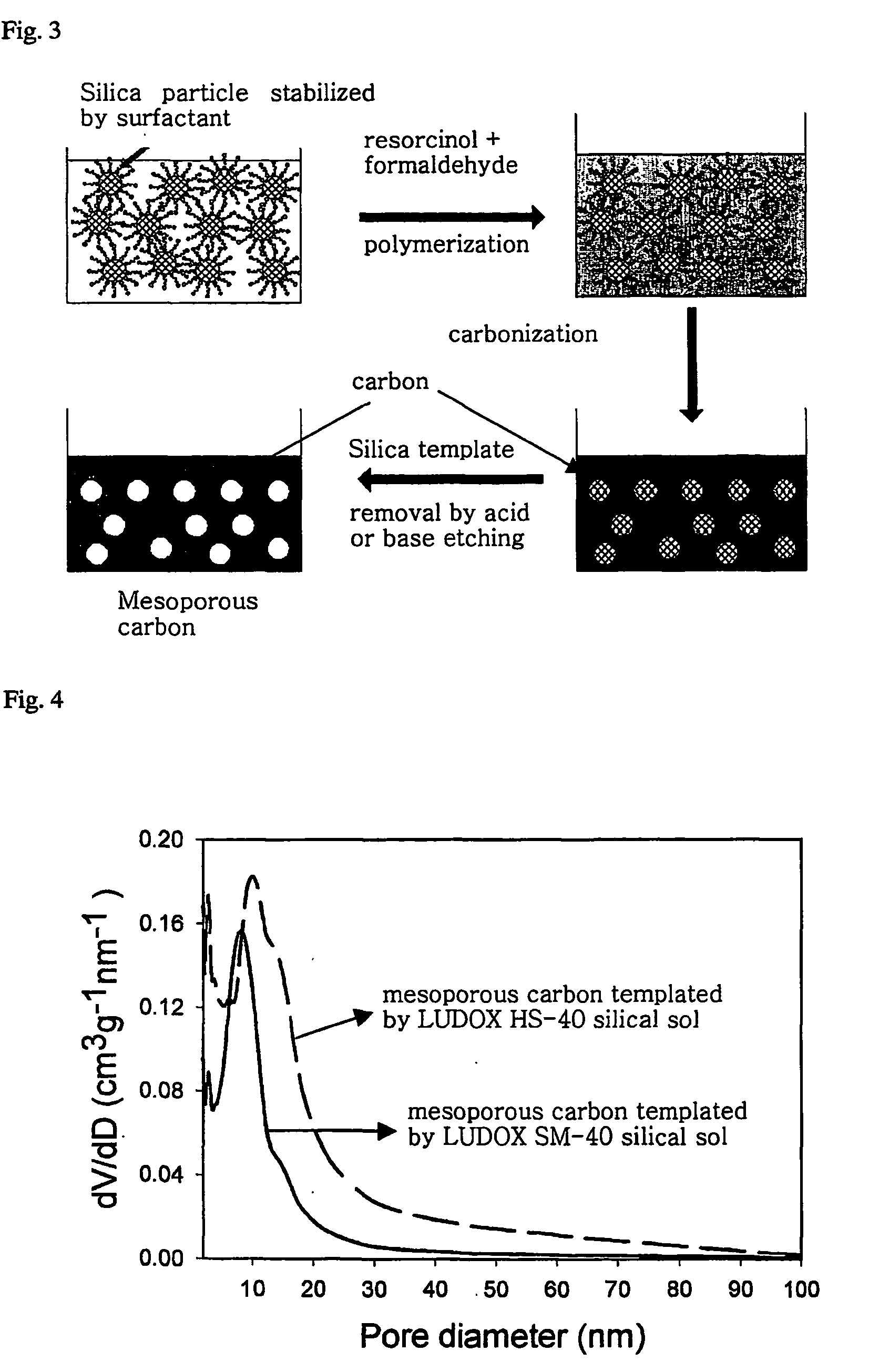Mesoporous carbon material, carbon/metal oxide composite materials, and electrochemical capacitors using them
- Summary
- Abstract
- Description
- Claims
- Application Information
AI Technical Summary
Benefits of technology
Problems solved by technology
Method used
Image
Examples
example 2
[0080] A mesoporous carbon was synthesized by the same method as example 1 with an exception that LUDOX HS40 silica was used instead of LUDOX SM-30. The mesoporous carbon synthesized had the specific surface area of 950 m.sup.2 / g, the pore volume of 5.5 cc / g, and the average pore size of 23 nm. In addition, this carbon had large pores (>2 nm) in 96%. FIG. 2 shows the SEM (scanning electron microscopy) image of synthesized carbon with the magnification of 75,000. As presented in FIG. 2, the pore size is ranging between 10 nm and 100 nm.
example 3
[0081] A silica was formed by adding 5 g cetyltrimethylammonium bromide to 100 ml of LUDOX SM-30 silica aqueous sol, which was stabilized by surfactants. The remaining surfactants were removed by washing with 100 ml of distilled water in 3 to 5 times. To this surfactant-stabilized silica sol solution, a mixture of resorcinol, formaldehyde, sodium carbonate, and water (1:2:0.015:5.6 in mole ratio) was added dropwise to fully wet silica, wherein the sodium carbonate was used as a catalyst for resorcinol and formaldehyde to form gel. The mixture solution was aged at 85.degree. C. for 3 days to form resorcinol-formaldehyde-gel / silica composite, which was heated at 850.degree. C. in nitrogen for 3 hours to be transformed to a carbon / silica composite. The final mesoporous carbon was obtained by removing the silica in the resultant composite by etching in 48% fluoric acid with stirring for 12 hours. This carbon had the specific surface area of 1090 m.sup.2 / g, the pore volume of 1.7 cc / g, a...
example 4
[0082] A mesoporous carbon was synthesized by the same method as example 3 with an exception that LUDOX HS40 silica was used instead of LUDOX SM-30. The mesoporous carbon thus prepared had the specific surface area of 1510 m.sup.2 / g and the pore volume of 3.6 cc / g. The mesopores, larger than 2 nm, were over 99%. As can be seen from FIG. 5, the uniform pores of 12 nm were observed in the transmission electronic microscope (TEM: .times.250,000).
PUM
| Property | Measurement | Unit |
|---|---|---|
| Time | aaaaa | aaaaa |
| Time | aaaaa | aaaaa |
| Time | aaaaa | aaaaa |
Abstract
Description
Claims
Application Information
 Login to View More
Login to View More - R&D
- Intellectual Property
- Life Sciences
- Materials
- Tech Scout
- Unparalleled Data Quality
- Higher Quality Content
- 60% Fewer Hallucinations
Browse by: Latest US Patents, China's latest patents, Technical Efficacy Thesaurus, Application Domain, Technology Topic, Popular Technical Reports.
© 2025 PatSnap. All rights reserved.Legal|Privacy policy|Modern Slavery Act Transparency Statement|Sitemap|About US| Contact US: help@patsnap.com



